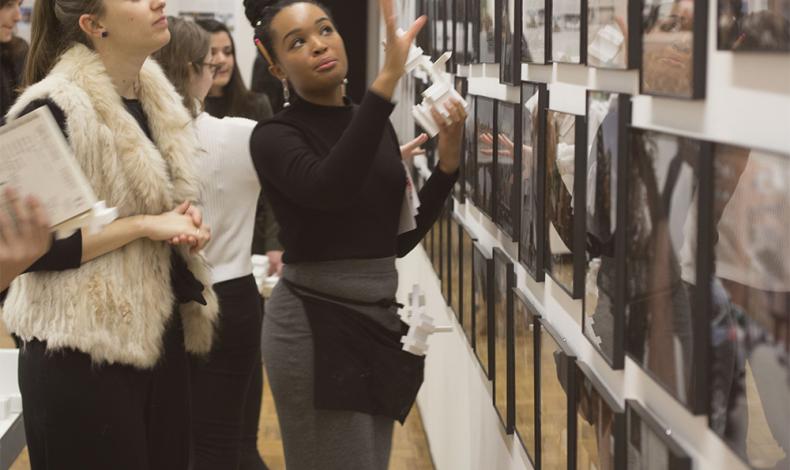Introductions: Sophie Hochhäusl

Meet Sophie Hochhäusl, assistant professor of architecture. Her scholarly work centers on modern architecture and urban culture in Austria, Germany, and the United States, with a focus on the history of social movements, women’s and gender studies and environmental history.
Sophie Hochhäusl, assistant professor of architecture, began teaching in the Department of Architecture in the fall after a one-year appointment as the Frieda L. Miller Fellow at the Radcliffe Institute for Advanced study at Harvard University. Her scholarly work centers on modern architecture and urban culture in Austria, Germany, and the United States, with a focus on the history of social movements, women’s and gender studies and environmental history.
Can you talk about one of the courses you are teaching this year?
I am teaching a course titled From Kitchen to Counter Space, Gender, Difference, and Dissent, which looks at the history of twentieth century architecture and planning from the perspective of gender. Throughout the course I have proposed two ideas. First, that in order for architectural history to acknowledge a more diverse cast of actors in the production of architecture and the built environment, it is important to reflect upon a greater variety of sources including letters, novels, and even works of fiction. Secondly, I have proposed that we should not be too quick to discard the idea of looking carefully at biographies (and autobiographies), because I find life is instructive for the reassessment of works, especially when it comes to people whose gender identities were perceived as nondominant.
You are working on a book about Austrian architect and activist Margarete Schütte-Lihotzky. Can you tell us about this project?
I am working on making Austrian architect Margarete Schütte-Lihotzky’s 1984 German-language book Erinnerungen aus dem Widerstand, 1938-1945 [Memories of the Resistance] available to English-speaking audiences. The book follows Schütte-Lihotzky’s decision to return to Austria in 1940 from relative safety in Turkish exile to join the communist resistance against the Nazi regime.
Until today, no single scholarly essay has attempted to link her architectural and political work during this time. This is particularly striking because Schütte-Lihotzky is generally understood as having been one of the most important female architects of the interwar period, and is well-known for her housing designs, kindergartens, and her famous design of the so-called Frankfurt Kitchen. In the expanded introduction to this translation, I consider her architectural work alongside her activism, arguing that her book represents a critical approach to remembering and a significant record about the spatialization of sustained dissent.
As someone new to Philadelphia, what do you find striking about the city as a place to live? And in relation to your research?
I love Philadelphia. It is one of the most vibrant and exciting cities I have ever lived in. I am particularly eager to discover more of the city’s art scene in the coming months. Next semester I will be teaching an undergraduate course based on an interdisciplinary arts curriculum drawing on works of literature, fine arts, architecture, and performing arts. I am enthusiastic about taking students out to museums around Philadelphia and into archives on campus.
What are five artworks, movies, or publications that have been important to your current work and thinking?
Margarete Schütte-Lihotzky, Million Cities in China (1956)
Hannah Arendt, Men in Dark Times (1974)
June Jordan, Civil Wars (1981)
Octavia Butler, Lilith’s Brood (trilogy) (1987-1989)
Shailja Patel, Migritude (2008)
What are some projects you’re working on this year?
This year at Penn has been one of wonderful collaborations. My colleague Torsten Lange (ETH Zurich) and I just published an article for Architectural Histories on architecture and the environment, which brings together reflections by 15 international scholars. With my teaching fellow here at PennDesign, Rui Morais e Castro, a PhD student in the Department of Architecture, I have been editing an article that links questions around architectural production and labor theory in an essay entitled “A Utopian Island in the Midst of a Capitalist World?”. And, with German studies scholar Raphael Koenig (Harvard University) and architectural historian Christianna Bonnin (MIT), I have been working on the interdisciplinary book project Memories of the Resistance. For 2019, I am looking forward to similar joint endeavors.

